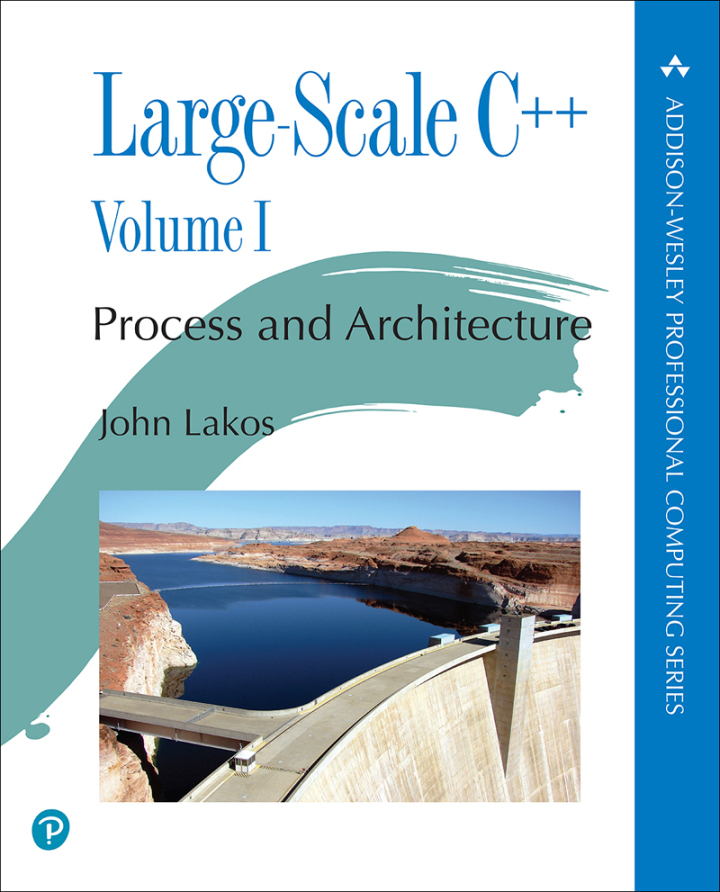
Large-Scale C++: Process and Architecture, Volume 1, 1st edition
PUBLISHER: PEARSON
eBook edition. 1 year Subscription. Dành cho Cá nhân | Trường ĐH, Nhóm, Thư Viện: Gọi 0915920514 để báo giá Pearson, Vital Source eBook hoặc mua Sách In
Trong C++ quy mô lớn Tập I: Quy trình và Kiến trúc, John Lakos đưa ra quan điểm của một học viên về phát triển phần mềm quy mô lớn hiện đại, giúp các chuyên gia giàu kinh nghiệm áp dụng các khái niệm thiết kế vật lý ở cấp độ kiến trúc trong công việc hàng ngày của họ. Lakos dạy các khái niệm quan trọng một cách rõ ràng và chính xác với các ví dụ mới có giá trị cao. Cập nhật và theo mô-đun, Tập I C++ quy mô lớn được thiết kế để giúp người đọc giải quyết các vấn đề ngay bây giờ và đóng vai trò là tài liệu tham khảo hấp dẫn trong nhiều năm tới.
- Preface xviiAcknowledgments xxv
- Chapter 0: Motivation 10.1 The Goal: Faster, Better, Cheaper! 30.2 Application vs. Library Software 50.3 Collaborative vs. Reusable Software 140.4 Hierarchically Reusable Software 200.5 Malleable vs. Stable Software 290.6 The Key Role of Physical Design 440.7 Physically Uniform Software: The Component 460.8 Quantifying Hierarchical Reuse: An Analogy 570.9 Software Capital 860.10 Growing the Investment 980.11 The Need for Vigilance 1100.12 Summary 114
- Chapter 1: Compilers, Linkers, and Components 1231.1 Knowledge Is Power: The Devil Is in the Details 1251.2 Compiling and Linking C++ 1291.3 Declarations, Definitions, and Linkage 1531.4 Header Files 1901.5 Include Directives and Include Guards 2011.6 From .h /.cpp Pairs to Components 2091.7 Notation and Terminology 2161.8 The Depends-On Relation 2371.9 Implied Dependency 2431.10 Level Numbers 2511.11 Extracting Actual Dependencies 2561.12 Summary 259
- Chapter 2: Packaging and Design Rules 2692.1 The Big Picture 2702.2 Physical Aggregation 2752.3 Logical/Physical Coherence 2942.4 Logical and Physical Name Cohesion 2972.5 Component Source-Code Organization 3332.6 Component Design Rules 3422.7 Component-Private Classes and Subordinate Components 3702.8 The Package 3842.9 The Package Group 4022.10 Naming Packages and Package Groups 4222.11 Subpackages 4272.12 Legacy, Open-Source, and Third-Party Software 4312.13 Applications 4332.14 The Hierarchical Testability Requirement 4372.15 From Development to Deployment 4592.16 Metadata 4692.17 Summary 481
- Chapter 3: Physical Design and Factoring 4953.1 Thinking Physically 4973.2 Avoiding Poor Physical Modularity 5173.3 Grouping Things Physically That Belong Together Logically 5553.4 Avoiding Cyclic Link-Time Dependencies 5923.5 Levelization Techniques 6023.6 Avoiding Excessive Link-Time Dependencies 7043.7 Lateral vs. Layered Architectures 7223.8 Avoiding Inappropriate Link-Time Dependencies 7393.9 Ensuring Physical Interoperability 7533.10 Avoiding Unnecessary Compile-Time Dependencies 7733.11 Architectural Insulation Techniques 7903.12 Designing with Components 8353.13 Summary 908Conclusion 923Appendix: Quick Reference 925Bibliography 933Index 941















